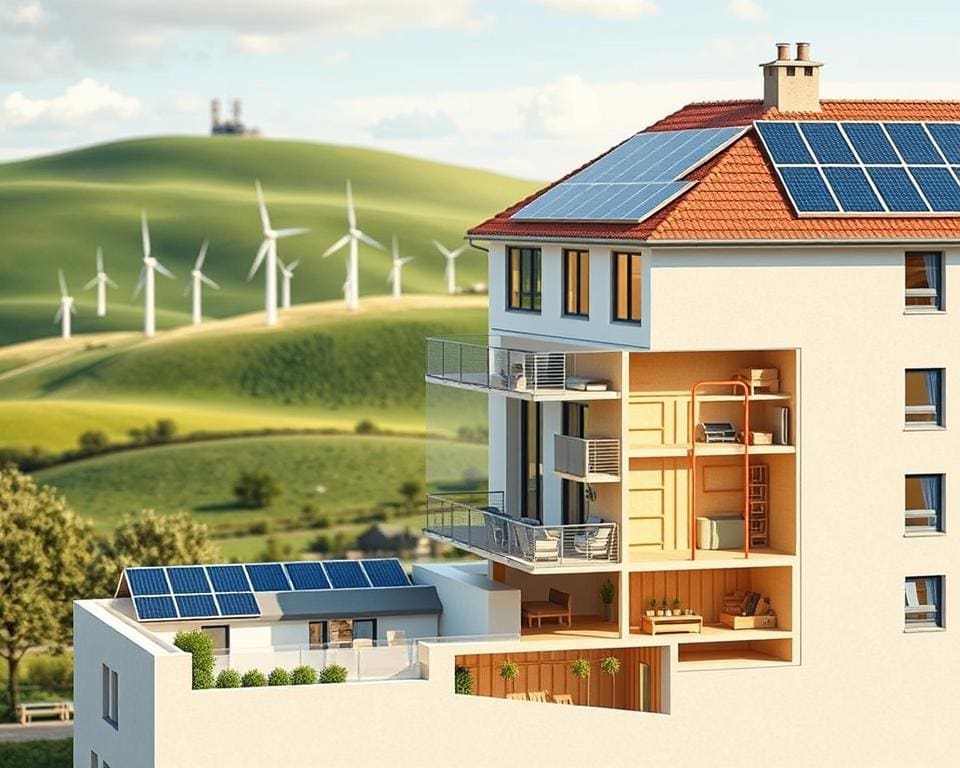In an era where environmental accountability is at the forefront of public discourse, understanding how contractors meet energy standards affordably has become essential. The construction industry in the UK faces increasing challenges as energy standards tighten, driven by the government’s commitment to reducing carbon emissions and promoting sustainable practices. Cost-effective energy compliance for contractors is not merely a regulatory obligation but also a pathway to enhanced contractor energy efficiency. Navigating these complexities requires innovative solutions that allow for compliant practices without burdening budgets. As we explore these strategies, we will unveil how contractors can successfully embrace energy efficiency while keeping costs manageable.
Understanding Energy Standards in the UK
Energy efficiency regulations play a pivotal role in shaping the construction and development landscape in the United Kingdom. Legislation such as the Energy Act 2011 and subsequent amendments aim to enhance energy performance in residential and commercial properties. These energy standards not only address environmental concerns but also set benchmarks for energy-efficient contractor practices, ultimately leading to better living and business conditions.
Overview of Energy Efficiency Regulations
The framework of energy efficiency regulations in the UK includes critical measures like the Minimum Energy Efficiency Standards (MEES) and Building Regulations. These guidelines serve as the foundation for establishing a baseline in energy performance. Compliance is not optional; it ensures that properties meet established energy efficiency criteria. For contractors, adhering to these regulations is essential to provide affordable energy standard solutions that align with governmental initiatives towards sustainability.
Importance of Compliance for Contractors
For contractors, compliance with energy efficiency regulations holds substantial significance. Failing to meet these standards can lead to considerable fines and harm a contractor’s reputation. This impact can extend to future business opportunities, underscoring that compliance is more than just legal adherence; it is integral to responsible business practices. Implementing energy-efficient contractor practices promotes not only compliance but fosters trust among clients and stakeholders, enhancing long-term profitability and market competitiveness.

How do contractors meet energy standards affordably?
Meeting energy standards in a cost-effective manner requires contractors to adopt innovative techniques that can reduce expenses while ensuring compliance. By utilising advanced materials and renewable technologies, contractors can achieve energy efficiency without breaking the bank.
Innovative Techniques to Achieve Compliance
Retrofitting existing buildings with high-performance insulation is one strategic method employed by contractors. This technique limits energy loss, leading to lower heating and cooling costs. Contractors may also opt for advanced materials such as triple-glazed windows that provide superior insulation compared to traditional options.
Renewable energy sources, including solar panels and wind turbines, have gained popularity as affordable energy standard strategies for contractors. These technologies not only generate clean energy but also often come with government incentives that further alleviate upfront costs.
Benefits of Cost-effective Energy Solutions
Embracing these innovative techniques yields numerous benefits. Firstly, reduced long-term operational costs significantly improve a building’s overall value. Clients appreciate the lower utility bills and the enhanced comfort provided by well-insulated structures.
Furthermore, incorporating energy-efficient solutions can lead to increased satisfaction among clients. They recognise the importance of sustainability and lean towards contractors who prioritise energy compliance in their projects, thereby boosting a contractor’s market appeal. By implementing these methods, contractors demonstrate a commitment to sustainability while addressing the pressing need for affordable energy standard strategies for contractors.
Affordable Energy Standard Strategies for Contractors
As contractors strive to meet energy standards while remaining financially viable, several effective strategies emerge. By embracing affordable energy standard strategies for contractors, businesses can navigate the complexities of energy compliance with confidence. This section highlights methods to leverage government support and make budget-friendly material choices.
Leveraging Government Incentives and Grants
Contractors can benefit immensely from government incentives and grants aimed at promoting energy efficiency. Various programmes, such as those offered by the Energy Saving Trust and local councils, provide financial assistance for energy-efficient upgrades. These funding opportunities not only offset initial costs but also enhance contractor energy efficiency in their projects.
Steps for Budget-Friendly Material Choices
Sourcing materials that are both cost-effective and compliant with energy standards is crucial. Contractors can explore options such as:
- Utilising recycled materials that meet quality standards.
- Selecting suppliers who offer eco-friendly products at competitive prices.
- Taking advantage of sales and bulk purchasing discounts to lower costs.
By balancing affordability with quality, contractors can ensure their projects align with energy regulations while maximising savings. Making informed decisions about materials not only contributes to compliance but also fosters a sustainable approach to construction.
Energy-efficient Contractor Practices
Contractors play a crucial role in implementing energy-efficient practices that contribute to a sustainable future. By integrating sustainable design principles and utilising advanced tools, contractors can enhance their effectiveness while ensuring compliance with energy standards. This commitment not only meets regulatory requirements but also provides clients with cost-effective energy compliance for contractors.
Integrating Sustainable Design Principles
Incorporating sustainable design principles into construction projects can significantly enhance energy performance. Techniques such as passive solar design maximise natural light and minimize energy consumption. Water-efficient landscaping not only reduces resource use but also enhances the aesthetic value of properties. By adopting these principles, contractors can demonstrate their dedication to energy-efficient contractor practices, ultimately benefiting their clients and the environment.
Utilising Energy Modelling Software
Energy modelling software serves as an essential tool for predicting energy performance in construction projects. By simulating various design options and assessing their impacts, contractors can identify the most effective strategies for achieving compliance with energy standards. This approach enables informed decision-making and ensures substantial energy savings over the building’s lifecycle, reinforcing a contractor’s reputation for delivering cost-effective energy compliance for contractors.
Training and Continuous Improvement for Teams
Investing in team training is vital for maintaining a competitive edge in the construction industry. Ongoing education allows team members to stay informed about the latest energy standards and innovative practices. A focus on continuous improvement fosters a culture of adaptability, enabling contractors to respond to changes in regulations and technologies effectively. This proactive approach strengthens client relationships, as teams can offer tailored solutions that align with their clients’ needs for energy efficiency.
Challenges and Solutions in Achieving Energy Compliance
In the dynamic landscape of construction, contractors often encounter significant challenges when pursuing cost-effective energy compliance. Rising material costs can pose a considerable obstacle, making it difficult for companies to implement the latest energy-efficient technologies. Furthermore, limited access to up-to-date resources can hinder contractors’ ability to remain compliant with stringent regulations aimed at enhancing contractor energy efficiency.
To overcome these barriers, forming strategic partnerships with sustainable suppliers is crucial. By fostering these relationships, contractors can gain access to resources and materials that not only meet regulatory standards but also align with budget constraints. Additionally, employing skilled professionals who are well-versed in the intricacies of energy compliance can make a significant difference in navigating the complexities of regulatory requirements.
Staying informed about changes in regulations through professional organisations and engaging in continuous education is another vital aspect. This proactive approach empowers contractors to adapt to evolving compliance standards efficiently, ensuring their practices remain both relevant and cost-effective. By implementing these solutions, contractors can confidently move towards achieving energy compliance, ultimately benefitting both their business and the environment.









